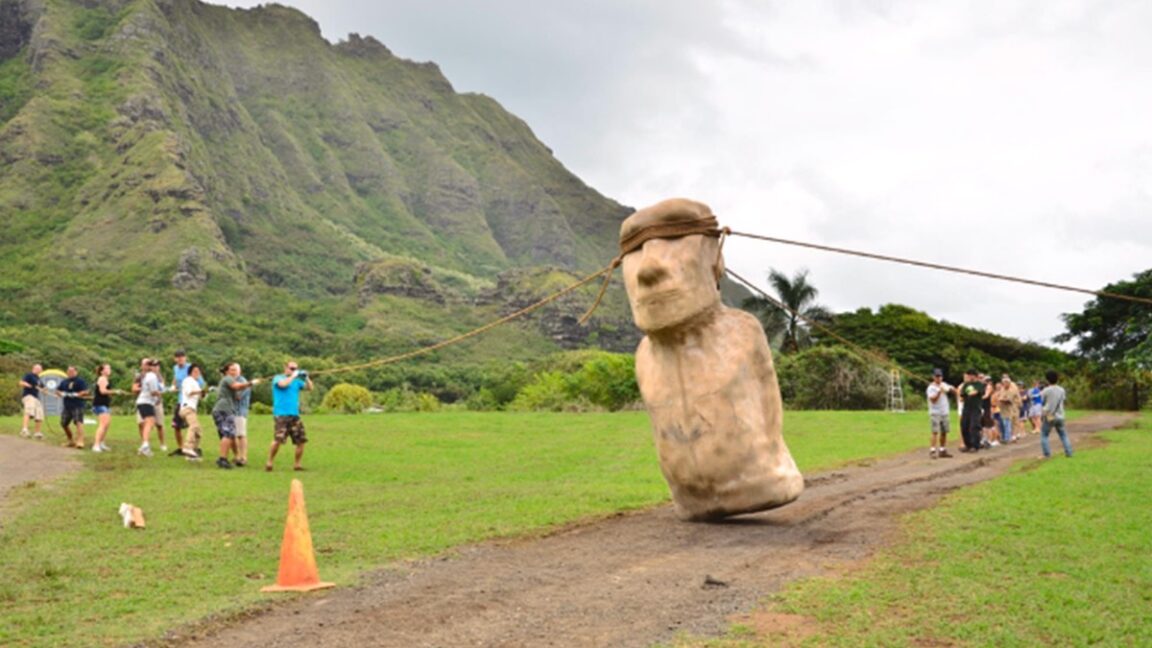
"Scholars have puzzled over the moai on Easter Island for decades, pondering their cultural significance, as well as how a Stone Age culture managed to carve and transport statues weighing as much as 92 tons. One hypothesis, championed by archaeologist Carl Lipo of Binghamton University, among others, is that the statues were transported in a vertical position, with workers using ropes to essentially "walk" the moai onto their platforms."
"The oral traditions of the people of Rapa Nui certainly include references to the moai "walking" from the quarry to their platforms, such as a song that tells of an early ancestor who made the statues walk. While there have been rudimentary field tests showing it might have been possible, the hypothesis has also generated a fair amount of criticism."
Moai are giant statues on Easter Island built about 800 years ago and typically mounted on ahu platforms. Some moai weigh up to 92 tons, raising questions about carving and transport methods. Oral traditions of Rapa Nui describe the moai "walking" from quarries to platforms. Experimental work, including 3D physics modeling and field tests, shows that upright transport using ropes and a controlled rocking or zig-zag motion could move statues along specially designed roads. Field experiments demonstrated a 10-foot, 5-ton moai could be moved a few hundred yards by about 18 people using three strong ropes. The hypothesis remains debated but has gained fresh experimental support.
Read at Ars Technica
Unable to calculate read time
Collection
[
|
...
]